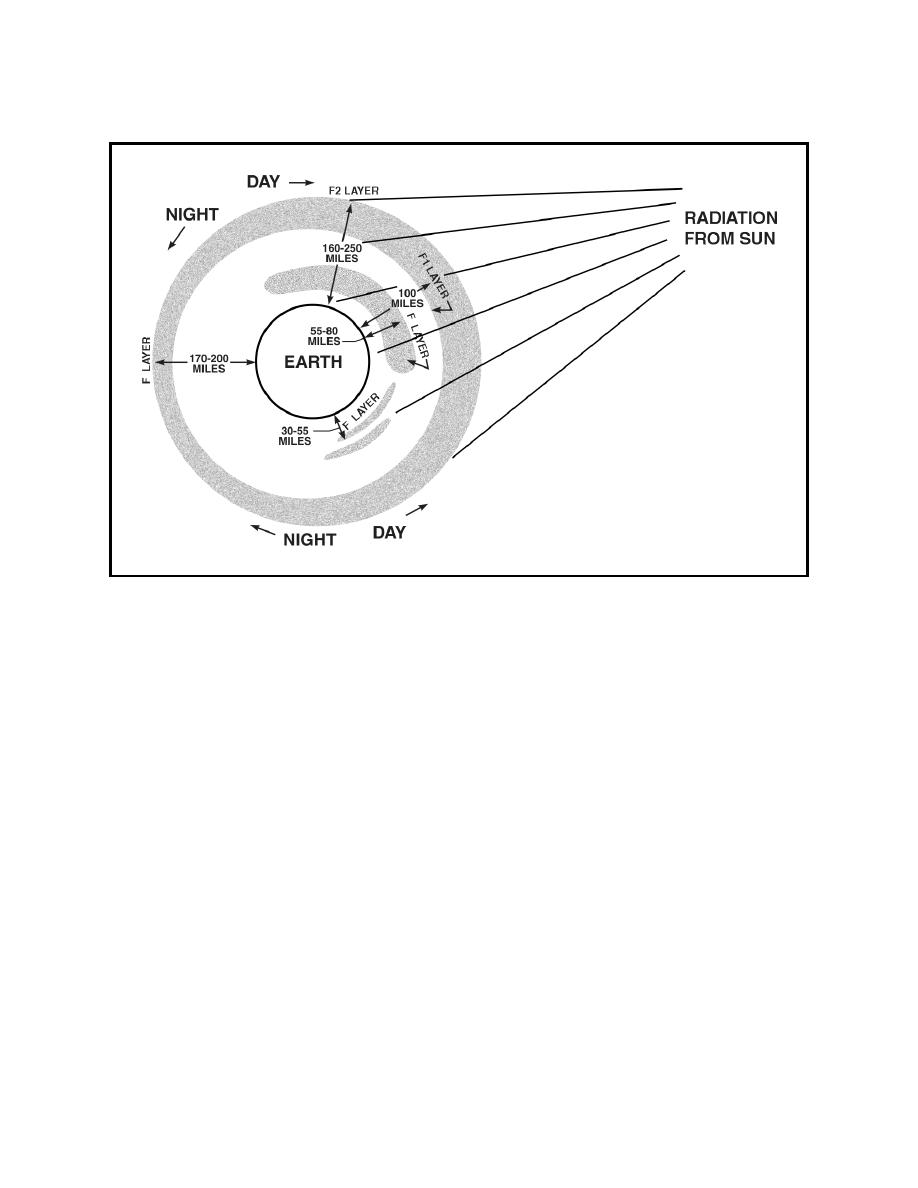
__________________________________________________________ Radio Wave Propagation
Figure 2-14. Layers of the Ionosphere
2-65. When a radio wave is transmitted into an ionized layer, refraction, or
bending of the wave, occurs. As we discussed earlier, refraction is caused by an
abrupt change in the velocity of the upper part of a radio wave as it strikes or
enters a new medium. The amount of refraction that occurs depends on three
main factors: (1) the density of ionization of the layer, (2) the frequency of the
radio wave, and (3) the angle at which the wave enters the layer.
Density of Layer
2-66. Figure 2-15 illustrates the relationship between radio waves and
ionization density. Each ionized layer has a central region of relatively dense
ionization, which tapers off in intensity both above and below the maximum
region. As a radio wave enters a region of increasing ionization, the increase
in velocity of the upper part of the wave causes it to be bent back toward the
earth. While the wave is in the highly dense center portion of the layer,
however, refraction occurs more slowly because the density of ionization is
almost uniform. As the wave enters into the upper part of the layer of
decreasing ionization, the velocity of the upper part of the wave decreases,
and the wave is bent away from the earth. If a wave strikes a thin, very
highly ionized layer, the wave may be bent back so rapidly that it appears to
have been reflected instead of refracted back to Earth. To reflect a radio
wave, the highly ionized layer must be approximately no thicker than one
wavelength of the radio wave. Because the ionized layers are often several
miles thick, ionospheric reflection is more likely to occur at long wavelengths
(low frequencies).
2-21


 Previous Page
Previous Page
